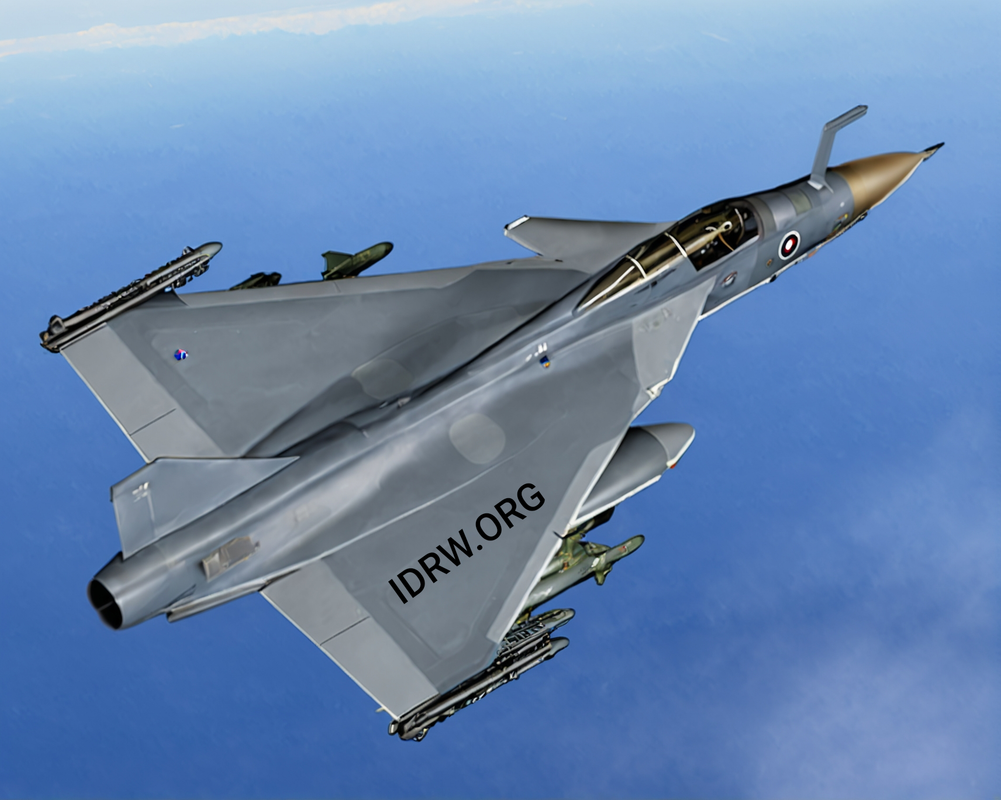SOURCE: RAUNAK KUNDE / NEWS BEAT / IDRW.ORG


Air Chief Marshal Amar Preet Singh, Chief of the Air Staff (CAS) of the Indian Air Force (IAF), provided a detailed update on the much-anticipated Tejas MkII program during a press briefing on Friday. He outlined key milestones for the program and emphasized the need for greater collaboration with the private sector to expedite the production and operationalization of the indigenous fighter jets. The CAS also reflected on past delays in the Tejas Mk1 project and stressed the importance of learning from those experiences to ensure smoother development for future platforms.
Air Chief Marshal Singh confirmed that the Tejas MkII is on track for its first flight next year, marking a crucial step forward for India’s indigenous fighter program. The research and development (R&D) phase for the Tejas MkII is set to conclude by December 2027, with the IAF planning to induct the first units by 2028. The IAF has already committed to acquiring at least 120 Tejas MkII jets, which are expected to fill a vital role in the force’s combat fleet, especially as older aircraft are phased out.
“The MkII is supposed to make its first flight sometime next year, and it is expected to be inducted by 2028. We have planned for at least 120 LCA Mark-2 planes,” said the Air Chief. He also expressed optimism about the progress of the project and the improvements made over the earlier Mk1 variant. The Tejas MkII is designed to be a more capable platform with greater range, payload capacity, and advanced avionics, making it a key element in modernizing the IAF’s air power.
One of the advantages of having a locally developed fighter jet like the Tejas MkII is the ease and speed of integrating new weapons systems. Air Chief Marshal Singh highlighted that adding new weapons to the Tejas MkII would be much faster and more streamlined than with imported platforms. This capability is critical as the IAF continues to modernize its arsenal and enhance its operational capabilities with cutting-edge technology.
“As far as Tejas MkII and AMCA are concerned, we all need to learn our lessons about what happened over Mk1 and what caused the delays. We should make sure that such things are ironed out,” he stated. The IAF chief pointed out that the transfer of technology (ToT) from design houses to production facilities, even when within India, often takes time and poses challenges. Ensuring smoother coordination between design and production will be essential for timely deliveries of the new platforms.
In a notable shift from traditional reliance on Hindustan Aeronautics Limited (HAL) as the sole manufacturer of indigenous aircraft, Air Chief Marshal Singh advocated for increased participation from the private sector. “I don’t think we can continue relying on one agency. HAL will have its own limitations in terms of what it can do within a time frame, we need to have private industry chipping in and coming in a big way,” he said.
The Aeronautical Development Agency (ADA), which is overseeing the development of the Tejas MkII, recently issued an Expression of interest (EOI) to private sector companies for the production of structural components for the fighter jet that was reported earlier by idrw.org. These components include the front, center, and rear sections of the aircraft fuselage, as well as critical parts like the wings, vertical tails, horizontal tails, and canards. By engaging private players in the production process, the IAF hopes to accelerate the manufacturing timeline and ensure timely deliveries.
As the IAF looks to modernize its fleet and expand its operational capabilities, the timely development and induction of platforms like the Tejas MkII and AMCA are crucial. Air Chief Marshal AP Singh’s call for a more collaborative approach involving both HAL and private industry marks a turning point in how India approaches defense production. With clear timelines now set for the Tejas MkII and a strong commitment to learning from past delays, the IAF appears focused on ensuring that its future combat fleet is not only modern but also indigenously produced, in line with India’s Atmanirbhar Bharat vision.
NOTE : Article cannot be reproduced without written permission of idrw.org in any form even for YouTube Videos to avoid Copy right strikes. Websites doing illegal reproductions will get DMCA and Legal Notices.